
 |
ROLEXROLEXROLEXROLEXROLEXROLEX
 ROLEXROLEXROLEXROLEXROLEXROLEX
ROLEXROLEXROLEXROLEXROLEXROLEX
|
|
#1 |
|
Banned
Join Date: Mar 2014
Location: UK
Posts: 3,990
|
Pequignet Ranelagh – the French–Irish connection
March the 19th – that was the date on which the independent French watch manufacturer, Pequignet, revealed their new Moorea collection, and which would be seen at the forthcoming Baselworld Fair.
The Moorea collection first appeared in 1984, with the name inspired by Emile’s passion for his race horse, Moorea. Within the line-up, is a range called the Ranelagh, comprising of the automatic gents models, and the smaller quartz ladies models, some of which are adorned with diamonds on the dial and the bezel. Pequignet also manufacture jewellery, so fitting gems to the ladies watches isn’t that much of a surprise. Whilst Ranelagh shares its name with the district on the south side of Dublin City, Ireland, the name is more likely to have arisen from Le Jardin du Ranelagh, which are situated in Paris. In the late 18th Century, the upper middle class from the 16th Arrondissement (district) would gather in the gardens, for a public ball. This ball was named after a similar ball held in London, organised by the titled Irish citizen, Lord Ranelagh. Now that the watch’s name has been explained, what about the brand itself — who is Pequignet? Named after the founder, Emile Pequignet, who started traditional watchmaking at the age of 16, the brand was born in 1973. Situated within the heart of, and traditional birthplace of watchmaking, the Jura mountains, on the border of Switzerland and France, lies French village of Morteau. There, is where you’ll find the, still independent, Pequignet manufacturing facility. Prior to 2004’s selling of Pequignet, in order to enjoy retirement, Emile had designed and crafted 200 of the company’s products, signing them with the EP logo, instead of using outside designers. Since then, the logo has been replaced with the Royal fleur-de-lys, but as a result of designing their own movement, the new owner took the brand to the point of bankruptcy, in 2012. Only for two financial investors to be interested in the company as a whole, rather than solely the movement and its patents, as many other parties were, the brand has survived intact — and with that, comes the first of a new era of Moorea designs. The Ranelagh, pour homme Let’s start off with the specifications, and some facts and figures. The automatic movement being used by Pequignet, is not Swiss manufactured, as one would naturally expect given the location of the brand, but instead one from a certain Japanese company – namely Seiko. It is the SII NH35A, operating at 21,600 vph, with 24 jewels and a power reserve of circa 50 hours. In my testing with the two versions supplied, it was only able to achieve 44-46 hours. The automatic winding rotor is a very plain affair, with nothing more than Côtes de Genève striping. I enquired about this oversight, and have been assured that future production will see the rotor embellished with the fleur-de-lys logo and the Pequignet name. The case is a standard 316L stainless steel, as too is the bracelet, with the distinguishing trademark Moorea grain-shaped hinged links. It is 44 mm wide, excluding the crown, with a thickness of just over 10.5 mm, and houses sapphire crystals on both sides, with anti-reflective coating. 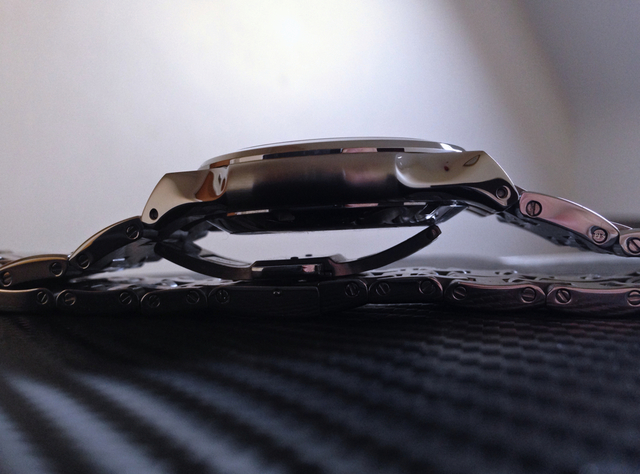 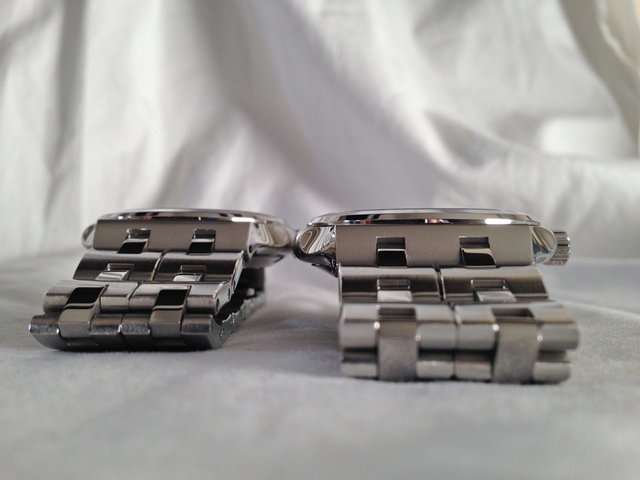 The crown is signed with a raised relief of the fleur-de-lys, but is not a screw-down design, since it has only a 50 m (5 ATM) water resistance. 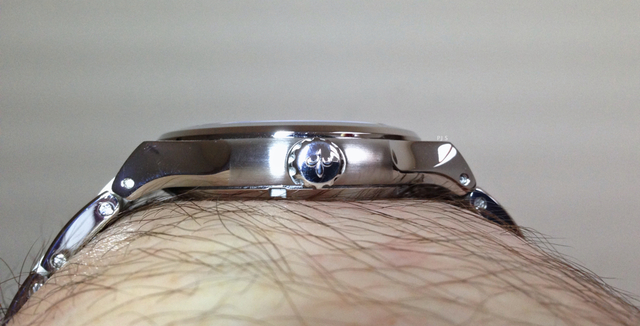 The dial is a sunburst design, available in silver or grey, with the blue from the Elegance range being planned for, since the image and product code is showing on the Pequignet website, with applied high polished Pequignet and fleur-de-lys logos. At the bottom, is printed Fabrique En France – which is not something you see every day! The hands and indices are high polish, with fleur-de-lys motif on the counter-balance end of the seconds hand, and the date display is at the 6 position, presented as white text on a black background. Both the hour and minute hands are an open design rather than solid.   The NH35A movement features stop-seconds (commonly referred to as hacking), and being a simple 3-hander with date, the crown has two positions – date setting, by turning the crown towards you, and time setting. As supplied, the Ranelagh weighs in at 173 grams, and has the following measurements you’ll not find on the manufacturer’s website…. Lug width: 32 mm, with the bracelet being 32 mm tapering to 22 mm at the clasp. Lug to lug distance: 44 mm measured on the underside, 49 mm on the outside edges. Bracelet thickness: ~ 3.3 mm (not quite 3.5 mm on the tape – I really ought to invest in a vernier caliper) The case is an interesting design, with its mix of fine satin brushed finish playing off the high polished bezel and scalloped sides. The feel of the case contours, with an additional mix of sharp lines in alliance with the rounded ‘ears’, is something you will admire, and never tire of touching. As a result, the Ranelagh exhibits a comfortable wearing attribute, with no digging into the wrist.  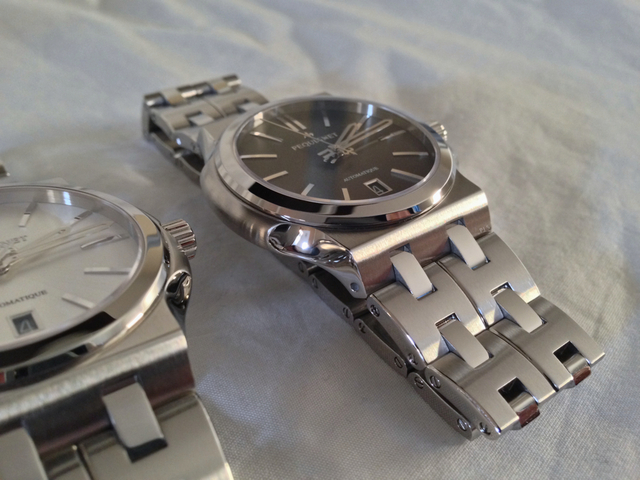  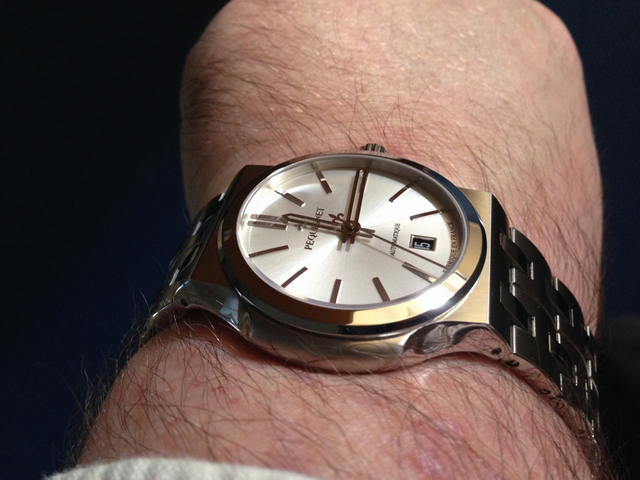 The bracelet is equally intriguing, and adds to the overall comfortable nature of the watch. Design wise, it too employs the mixing of a finely brushed satin-effect finish with high polished hinged links, and offers an evolutionary take on the original Moorea bracelet design. Completing the bracelet, is a fairly standard butterfly style deployant with the fleur-de-lys motif on the clasp, machined into a polished background.  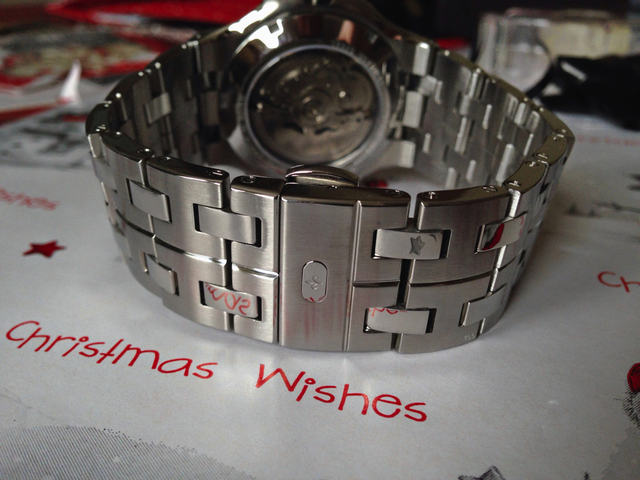 An extremely flat sapphire crystal offers a very clear view of the dial, thanks to the effectiveness of the anti-reflective coating in usage. 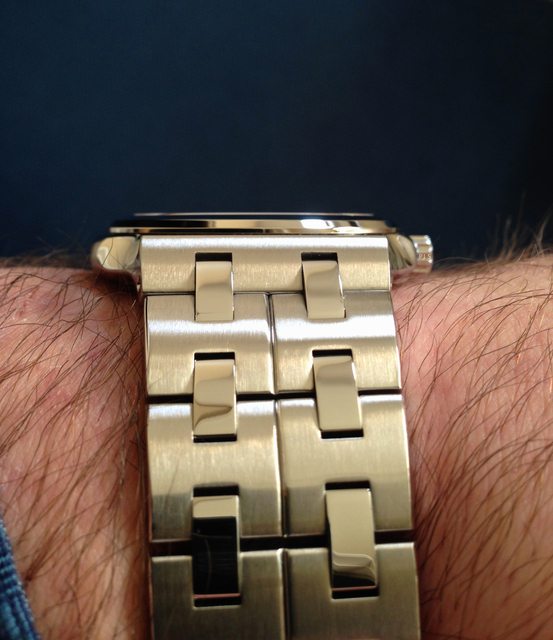   Packaging comprises a nicely done brown leatherette exterior and an ivory/cream interior. This is housed within a drop-flap cardboard box, in the same hue of brown. For the price that the Ranelagh retails at, it is nicely done and is very appropriate. The money has been spent on the watch itself rather than an overly elaborate presentation, which makes perfect sense. 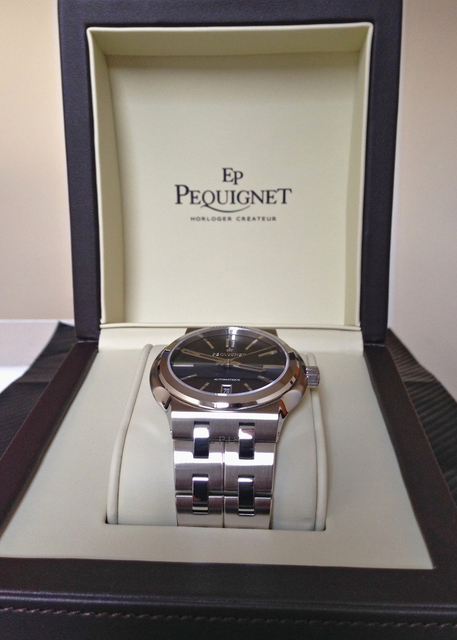   The first time I saw the renders (back in May or June), I thought the silver dial looked a tad bland. I expected the whole watch to be a bit of a homogenous blob, but the reality is that in the metal, the dial doesn’t disappear or blend into an amorphous ensemble, but stands out, radiantly. Pequignet has done a very good job here, but of the two, the smoky grey version was my preferred choice, as there’s a beautiful tone to it, especially when the light plays with it — however, I could happily live with the silver version without a feeling of having settled for second best.  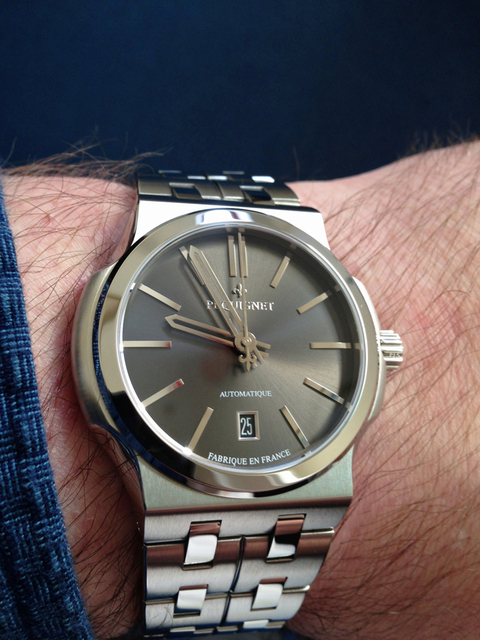 The Ranelagh is a fairly svelte watch, thickness wise, and as someone who tends not to prefer bulky/tall watches, this was right up my alley. That said, I was somewhat apprehensive about the bracelet width, as 32 mm is quite a bit different from the norm of most straps and bracelets. As it turned out, the overall profile of the case and integration with the bracelet was surprisingly convincing, such that it was never given another second’s thought. It looks good, it feels great — the Ranelagh is just a really nice watch, even putting its price and run-of-the-mill movement to one side.   Speaking of the movement choice, I have no doubt there will be some snobbish attitude towards the use of a Japanese workhorse, as opposed to a Swiss alternative. Obviously this was a conscious decision, and if it was solely down to cost, thereby allowing more funds to be allocated to the other aspects of the Ranelagh’s design, then it was the right one to make. During the period that I had both of these watches, they kept what would be considered as good time — between -7 and -8 seconds/day. Not exactly chronometer territory, but as is typical of Seiko’s own specifications, that’s as tight as you’d typically find in a watch at this price point (€950/£835).   
|
|
|

|
|
|
#2 |
|
"TRF" Member
Join Date: Jan 2009
Real Name: Larry
Location: Kentucky
Watch: Yes
Posts: 35,011
|
The silver is awesome. Nice pics.
|
|
|

|
 |
| Currently Active Users Viewing This Thread: 1 (0 members and 1 guests) | |
| Thread Tools | |
| Display Modes | |
|
|
*Banners
Of The Month*
This space is provided to horological resources.